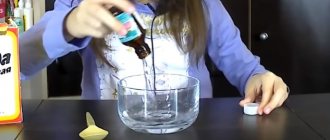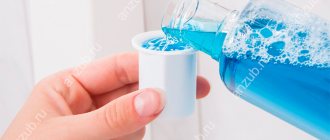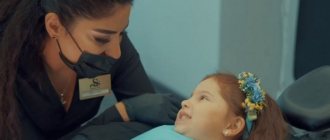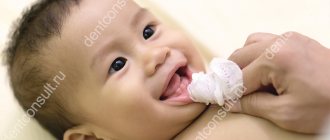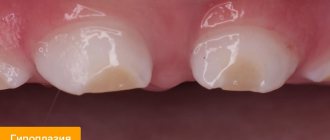Colorful traces
The first thing that comes to mind to immortalize the hands and feet of a child is to dip them in watercolor or gouache and print them on plain paper or cardboard. Yes, this is not the most original method, but it is inexpensive and fast. To preserve this sheet for a long time, you can either laminate it or put it in a beautiful stretcher.
Why is this so popular?
Couples in love use 3D impressions of their intertwined hands to capture life's important moments. Often such compositions are timed to coincide with the day of engagement or wedding.
Young parents make impressions of their babies' hands to remember what they looked like as babies/children. Often such casts are elegantly decorated and given to relatives. And in some families there is even a tradition: on each baby’s birthday, another cast of his hands and feet is made. As a result, a whole collection of “sculptures” appears, clearly showing how the child grew from year to year.
Connoisseurs of non-standard solutions in the interior make casts of their own hands to make them part of the decor. Such an element of the composition can be used, for example, as an elegant solution for storing rings.
Plasticine legs
Another simple option for making casts of children’s hands and feet with your own hands is plasticine. The best choice is one that hardens itself in the air, or a special mixture for modeling. The mass should be flattened into a medallion and the baby’s hand or foot should be well imprinted in it. Be sure to make a hole before the plasticine dries so that the “home heirloom” can be hung on a ribbon.
How to properly prepare for the casting process?
You can create a 3D plaster cast of your palm in standard home conditions. In this case, no additional technical devices are required.
All you need is to find suitable utensils, such as a gravy boat or a small saucepan. The main condition: that the entire palm with which you will make the impression can fit here. We also need a disposable container for preparing gypsum mortar. Silicone or enamel cookware is suitable. These utensils cannot be reused, so you must accept in advance that you will have to throw them away. However, if you intend to make impressions regularly, then it is better to purchase a special rubber plaster for mixing the working solution.
Salt dough print
Many of us sculpted “salted” figures as children, and now, having become parents, salted dough will help us capture the tiny fingers of our babies. So, how to make casts of children's hands and feet from salt dough?
Dissolve half a glass of salt in a glass of water and add about a glass of flour (more is possible until the dough begins to stick to your hands). We divide the resulting mass into 4 equal parts and roll it out with a rolling pin into flat round pieces a couple of centimeters thick and the size of a child’s hand and foot. With the baby's dry, clean palms and feet, we press deeply onto each piece. If the cast is unclear or you don’t like it, you can roll the dough again and repeat the procedure.
When the cast is ready, let the dough dry for 2-3 weeks. After this, the dough can be painted with acrylic paints. As you can see, this method is quite painstaking, but the result will be durable and original casts of the child’s arms and legs made from salt dough.
Master class No. 1. Plaster and rubber glove
You will need:
- gypsum;
- container in which the plaster will be mixed;
- water;
- thick rubber glove;
- a five-liter water bottle or any other stand on which you can attach the glove;
- tight hair tie;
- stationery knife;
- scissors;
- acrylic paints;
- napkins with beautiful designs;
- acrylic clear varnish.
Now let's get to work! Let's figure out how to make a hand from plaster using a rubber glove.
Salt dough and plaster cast
An even more meticulous and unusual way to get prints (casts) of children’s hands and feet with your own hands is to plaster them.
To do this, we make the dough according to the recipe described above, and form prints in the same way, and it is better to make 2 times more dough so that the print is as deep as possible (2-3 cm in depth). We take plaster (a creativity kit from special art stores for children is best, but a construction kit can also be used). We dilute it with water in the proportion of 1 cup of gypsum to half a glass of water (it is important to add water to the plaster, and not vice versa). Add 2-3 spoons of PVA glue to make the resulting cast stronger. Mix everything very quickly and pour it into the mold with the dough.
Before the mass hardens, it is better to wipe off all the unsightly edges with a cloth, otherwise you will have to file them off later, which could damage the shape. Let the cast of the child’s hand (foot) harden with your own hands for a day. Plaster usually dries quickly, but in order for everything to turn out well, it is better not to touch it for several hours. After which the finished cast can be removed from the dough. We sand all the unevenness with sandpaper. You can decorate such prints with acrylic paint or make an interesting collage of children's photographs with them. The main thing is to approach the process with imagination!
Making a plaster hand with your own hands
The technology for making a cast of a child's hand is slightly different from the work process with adults. The fact is that a child, as a rule, cannot keep his hand in a constant position until the molding mass grabs. Moving your fingers while molding ruins everything. Therefore, it is best to carry out this procedure during sleep in its deep phase.
Alginate molding compound is used. It is kneaded in a suitable sized bowl. All components are prepared in advance according to the instructions. Pour alginate powder into the water and stir it with a spoon until smooth for about one minute.
For adults, cold water is used. But to prevent the child from waking up from contact with the cool mass during sleep, it is better to warm it up. Warm water for mixing significantly reduces the time it takes to use the molding compound, so everything needs to be done quickly.
When the mixture is ready, it is poured into a suitable glass, selected according to the child’s hand, and his limb is placed there. The hardening time of the mass is 1-2 minutes. During this period, you need to keep the form at rest in order to get a high-quality print.
After the allotted time, the baby's hand is carefully removed. As a rule, this happens without problems, since the shape is plastic and does not deform under light load.
Immediately after this, the working solution is prepared and poured. Keep the plaster in the mold for no more than 30 minutes. Later, the alginate mass begins to release water, which will negatively affect the casting. The mold is removed from the glass, cut into pieces, and the child's plaster handprint is released. It is cleaned and left to dry.
The same principle is used to cast the hand of an adult or child, who can hold the hand at rest during molding.
Sand casts
Another way to make your own impressions of children's hands and feet is to use sand instead of dough. The operating principle is the same. Pour sand into a deep container, moisten it with water so that it turns into a thick mass, but does not float in the water and the child’s print does not spread. We lower the baby’s leg or arm deeper (1-2 cm) so that an imprint remains, and take it out. Then we lower the plaster into the resulting mold (the proportions are described above) and leave it for several hours to harden. Then shake off the excess sand.
Material groups
All materials used to make impressions are hypoallergenic.
The domestic industry offers 3 types of materials for creating impressions - hard, thermoplastic and elastic.
Solid
Gypsum is most often used to make the structure. It consists of a powder diluted with water and contains:
- calcium sulfate;
- borax;
- starch;
- hemihydrate
The hardening process of gypsum is easily controlled by introducing additional amounts of borax and calcium sulfate.
The material mixes easily, the main thing is not to trap air during the procedure. Otherwise, pores will form on the surface of the material.
The hardening time of the plaster impression is 2-3 minutes. The mixture is characterized by low viscosity and good spreading over the surface of mucous membranes.
Among the advantages of gypsum it should be noted:
- reproduction of the relief of soft tissues with high accuracy;
- ease of use;
- maintaining original dimensions;
- possibility of delayed production of a plaster model.
The disadvantages of the material include:
- increased rigidity;
- the impossibility of creating an imprint from those parts of the tooth that are located close to the surface of the gums (undercuts);
- Patients have a feeling of dry mouth after removal of the impression.
Among the hard materials used to create an impression, dentol should also be noted. The material is a mixture of guaiacol and zinc oxide eugenol.
Advantages of Dentol:
- low degree of shrinkage and deformation;
- the ability to create accurate impressions of the surface of teeth and soft tissues;
- possibility of long-term storage;
- harmlessness.
Is it always necessary to file teeth before installing braces?
Learn more here about how braces work.
At this address https://orto-info.ru/ortodonticheskoe-lechenie/podgotovitelnyiy-period/separatsiya-zubov.html we will tell you what teeth separation is.
Elastic
Elastic impressions are divided into 3 groups - silicone, alginate and thiokol. The basis of these materials is agar.
To ensure product strength, fillers are added to the impression mass. When heated, materials become soft, and when cooled, they become elastic.
Analginate products include novalgin and stomalgin. The design is characterized by a high degree of elasticity and a clear recreation of the contours of the prosthetic bed.
In dentistry, prostheses for jaws with partial absence of teeth are made from this material. This type of cast is characterized by a significant degree of shrinkage, so they are not suitable for long-term storage.
Sodium alginate, which is part of the material, allows you to easily separate the impression from the prepared model.
Silicone materials are made from liquid polymers mixed with a hardener. Silicone is used in the manufacture of:
- porcelain crowns;
- metal-ceramic and bulge prostheses.
Silicone impressions shrink on average 3 hours after production. Therefore, the creation of models occurs no later than this time.
Thiokol prints in dentistry are used for the same purposes as silicone prints. The advantages of these products include a low degree of shrinkage, and the disadvantages include the difficulty of obtaining the required shape.
Thermoplastic
Thermoplastic impressions are produced in the form of disks with a diameter of 100 mm. The material begins to melt at a temperature of 50-70 degrees.
Thermoplastic products include gutta-percha and wall. Among the negative properties of thermoplastic, the following should be highlighted:
- difficulty in making models;
- lack of “delay”.
There are 3 types of thermoplastic masses:
- No. 1 – used to take impressions of jaws that do not have teeth;
- No. 2 – used in orthopedics to take maxillofacial impressions;
- No. 3 – used for the production of pin teeth and splints.
Advantages of thermoplastic:
- separates well from models made from them;
- amenable to metallization;
- can be repeatedly introduced into the patient’s oral cavity;
- suitable for performing functional tests.
Modeling
Modeling materials include various types of wax - casting, base and for inlays. In dentistry, modeling impressions are used in the process of creating metal prostheses.
Inlay materials are used to create locking fastenings in combined type prostheses.
Casting wax is used in the production of thin dentures, and base wax is used for modeling temporary bridge models.
The advantage of the materials is a clear display of the contours of teeth and soft tissues. Lack of wax means a high risk of deformation.
More details about the materials and devices used are described in the video.
Casts from the finished set
Here were several ways to make casts of children's hands and feet with your own hands, but you can also use ready-made kits for creativity. They allow you to create high-quality “handles” and “legs” without using improvised tools; you just need to follow the instructions. There are 2D sets (only with prints), 3D (full palm and foot), as well as with the possibility of making a cast of a child’s hand together with an adult hand, casts in a frame, on a stand, in an album, with an engraved plaque and much more. The only drawback of this method is the high cost, but those who really know a lot about original and memorable items will appreciate it.
What is “alginate powder for impressions”
The use of this powder can most often be seen in dentistry. Using alginate, dentists make impressions to model dental prostheses, as well as to clarify the patient’s bite.
The powder sets quickly. Its “lifetime” is about fifteen minutes. So from the moment the water touches the powder, you don't have much time to stir it and then have time to stick your hand in there to create an impression.
Alginate holds its shape well, so it is often used for making impressions not only in dentistry. You can dip your hand into the alginate only after you have mixed the substance with water until it becomes thick sour cream. It will turn pink and change to yellow as it hardens.


